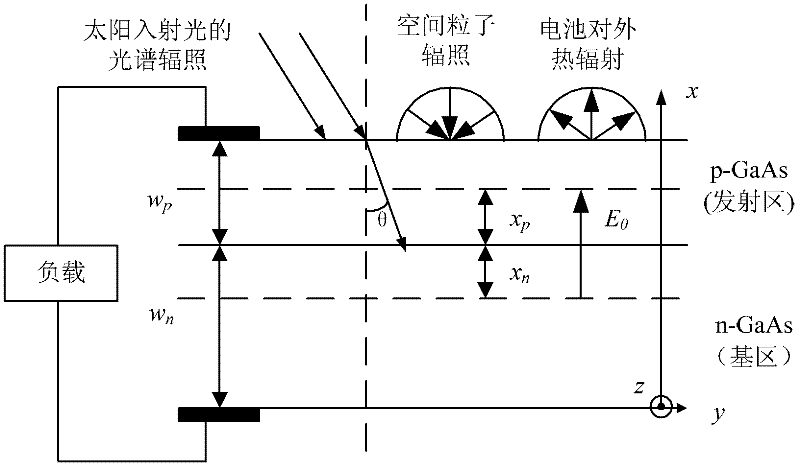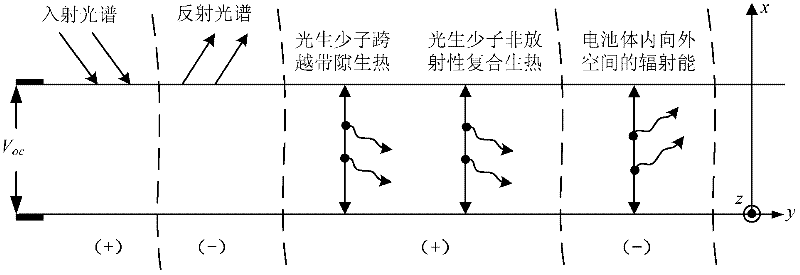GaAs solar energy cell performance degeneration prediction method in space environment
A solar cell and space environment technology, applied in non-contact testing, single semiconductor device testing, etc., can solve the problem of not comprehensively considering the degradation model and prediction method of solar cell electrical performance
- Summary
- Abstract
- Description
- Claims
- Application Information
AI Technical Summary
Problems solved by technology
Method used
Image
Examples
Embodiment Construction
[0080] A GaAs solar cell performance degradation prediction method in a space environment of the present invention, the steps are as follows:
[0081] Step 1: One-dimensional description of GaAs solar cells in space environment.
[0082] figure 1 It is a one-dimensional description of a typical GaAs solar cell in a space environment, and it simplifies the GaAs solar cell into a p-n junction with an external load through a metal electrode. For the convenience of one-dimensional description, figure 1 Only the effective generation regions of photogenerated carriers are shown: the emitter region (p region, GaAs material) and the base region (n region, GaAs material), while the window layer (AlGaAs material) and other process layers used to prevent surface recombination are ignored . The assumptions of this one-dimensional description are as follows: ①The battery is isotropic in three dimensions, so only the x direction is considered; The seat is bonded together and does not ac...
PUM
 Login to View More
Login to View More Abstract
Description
Claims
Application Information
 Login to View More
Login to View More - R&D
- Intellectual Property
- Life Sciences
- Materials
- Tech Scout
- Unparalleled Data Quality
- Higher Quality Content
- 60% Fewer Hallucinations
Browse by: Latest US Patents, China's latest patents, Technical Efficacy Thesaurus, Application Domain, Technology Topic, Popular Technical Reports.
© 2025 PatSnap. All rights reserved.Legal|Privacy policy|Modern Slavery Act Transparency Statement|Sitemap|About US| Contact US: help@patsnap.com



